Future Focus: Elizabeth Johnson
Elizabeth Johnson has returned from her elective in Nepal, after experiencing a variety of exposures and emotions.
During Elizabeth’s elective at Scheer Memorial Adventist Hospital (SMAH) she gained an invaluable perspective of the health system in Nepal amongst the organised chaos.
Multiple rotations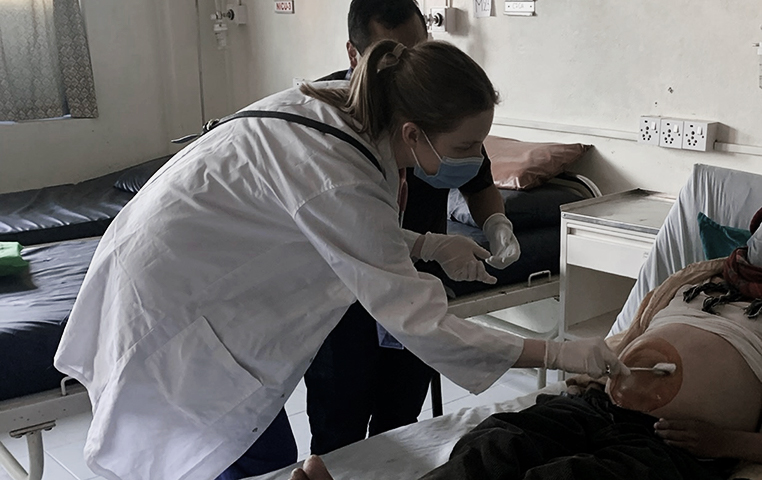
I completed a four week rotation through various departments within SMAH, a small 150 bed non-for-profit organisation, which provides healthcare to all patients irrespective of their ability to afford the necessary care. This is possible thanks to donations from around the world, and international training support. As such, the hospital can be under-resourced, relying on the dedication and ingenuity of staff. SMAH is nestled in Banepa, a small town surrounded by the beautiful Himalayas, with a population of 70 000 people. The hospital’s catchment is huge, with large numbers of patients travelling up to two days on foot from surrounding rural and mountainous villages, knowing that SMAH will not turn them away. I spent two to three days in a range of departments, with the aim of gaining a holistic and varied perspective of how the health system in Nepal functions, along with the nuance and initiative required to deliver optimal care despite financial and practical limitations. I spent time in emergency, internal medicine, ICU, paediatrics, obstetrics and gynaecology, general surgery, orthopaedics, anaesthetics, dermatology, and ophthalmology.
Organised chaos
The six-bed emergency department would see up to 100 patients per day, and the outpatient department would provide approximately 300 patients with consults, on-site investigations and management all in the single day. It was busy, but efficient - the patient turnover was rapid and required incredible cooperation and cohesion amongst multi-disciplinary teams. Before clinic doors opened at 10am, patients would queue in the registration line to pre-pay for their consult then line the corridors outside the clinic, waiting for the organised chaos to begin! Everyone worked together to ensure that patients who had travelled from remote villages were seen earlier in the day so they could begin the journey home in the afternoon. It was incredible to witness the full circle of patient care, from initial consult to management, all within the day. This provided patients with almost immediate treatment, continuity of care, and a higher likelihood of compliance with healthcare as they only had to attend the hospital for the single day rather than multiple visits. This clinical structure provided an invaluable learning experience as I was able to follow patient journeys often to a resolution, and clinically reason through their work-up more efficiently.
Medical ingenuity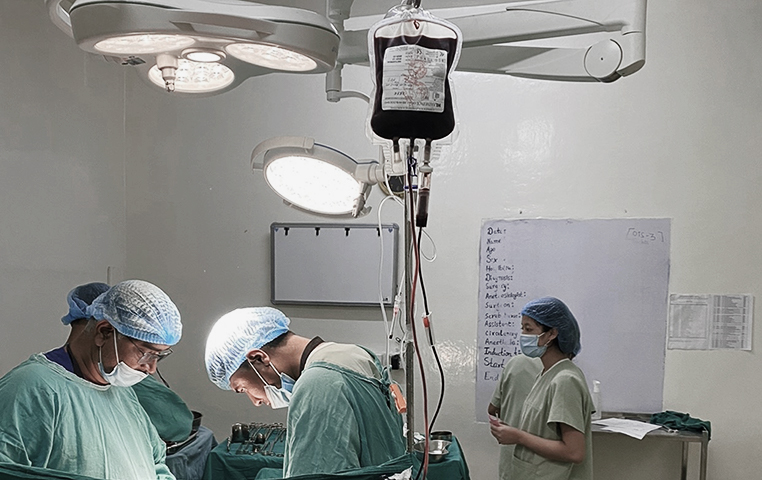
From a medical perspective, the spectrum of cases, presentations and procedures I saw in four weeks was huge. I saw cases of miliary and meningitis tuberculosis, meropenem-resistant pneumonia, phimosis and urinary retention in a four-day old infant, and an acute head injury after a motorbike accident. A common emergency case was organophosphate poisoning, of which I had not ever heard of in Australia. I was shocked to hear stories of patients ventilating themselves whilst intubated due to proximal muscle paralysis, as their hands remained functional, and the cost of the mechanical ventilator was too high to use. I observed an emergency laparotomy for a ruptured ectopic pregnancy in which the woman lost half of her blood volume and survived, assisted in draining 4L of ascitic fluid using a cannula, IV giving set and recycled drink bottles, learnt how to perform spinal anaesthetics, and refined my intubation skills. During internal medicine ward rounds I saw a patient with Chilaiditi Syndrome (bowel stuck between the liver and diaphragm), observed my first thoracocentesis, and helped work up a case of Wernicke-Korskoff syndrome in a patient with sepsis and mixed respiratory and metabolic acidosis in ICU. I helped with newborn baby checks, witnessed multiple caesarean sections and pain-relief free vaginal deliveries, and leant how to use a slit-lamp to examine eyes. The ingenuity here was impressive, with infant catheters in PICU being made out of tiny NGTs draining into a recycled saline bottle, a make-shift blood warmer for intra-op transfusions (the IV line being submerged in a bottle of hot water), and home-made bubble CPAP machines.
Lifestyle factors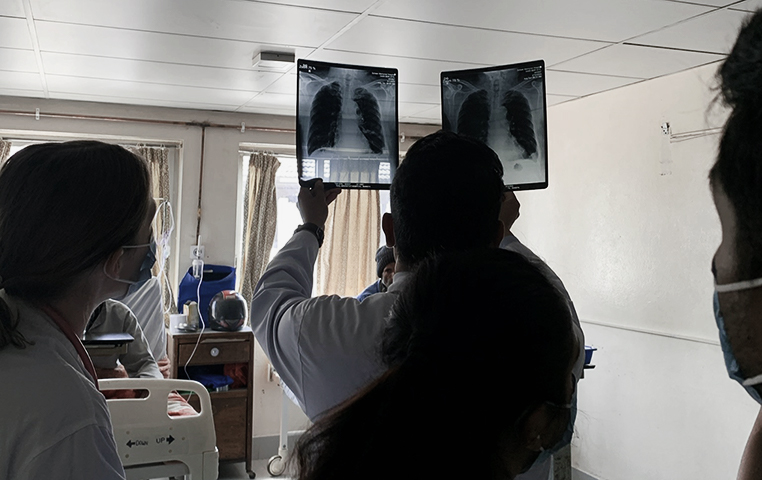
The most impactful learning in terms of both medical knowledge and ‘life experience’, was seeing first-hand the impact socio-economic determinants have on people’s experience and perception of health. It is difficult to express the conundrum I observed – patients were generally very resilient and optimistic despite battling severe and often frustratingly preventable pathologies. One of the most common presentations I saw in emergency and internal medicine was acute exacerbations of chronic obstructive pulmonary disease (COPD). Unlike in Australia where the majority of COPD cases are due to cigarette smoking, a large number of cases here were in elderly women who had spent the majority of their lives cooking on indoor wood fires with poor ventilation. Not only does this highlight a gap in health literacy, with villagers only transitioning their cooking from indoors to outdoors in recent decades, but is also evidence of the sub-optimal living conditions that remain commonplace in the developing regions of Nepal. It was not uncommon to see patients presenting to hospital later than they would in Australia, with more advanced pathologies which often required a ‘reactive’ solution as opposed to a ‘proactive’ one. Despite this, the general disposition of patients in Nepal was understanding and inspiringly resilient. I speculate that this may be related to the rich culture of gratitude, comradery and respect that I witnessed throughout my four weeks in Nepal.
Nepalese adventures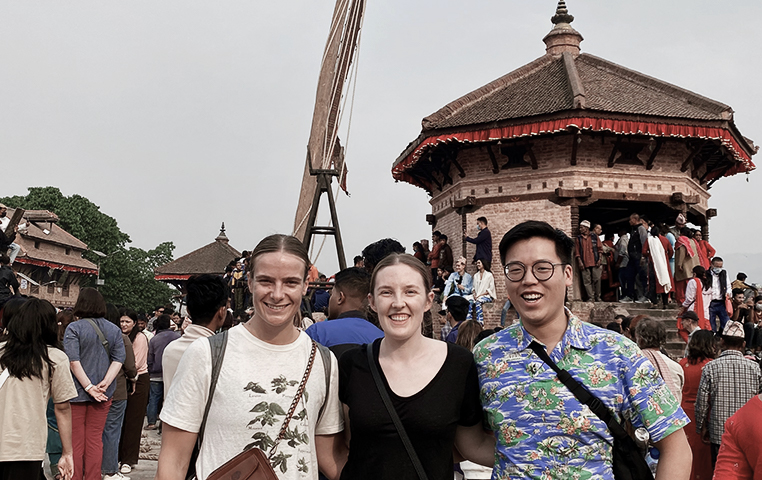
Outside the hospital, we were welcomed into the Nepalese way of life through our host family, befriending the junior doctors and other staff, and immersing ourselves in local festivals. We visited our host’s extended family in a small village, went to a nearby culturally historic city for the Nepali New Year celebrations, hiked to mountainous ministries, and ate an incredible amount of sumptuous local foods. Not to mention our weekend trip to Chitwan National park where we saw a huge variety of animals on safari including multiple rhinoceroses, paragliding in Pokhara, watching the sun rise and set over the majestic Fish Tail Mountain, and learning about Buddhist and Hindu culture at Kathmandu Valley’s numerous temples.
Conclusion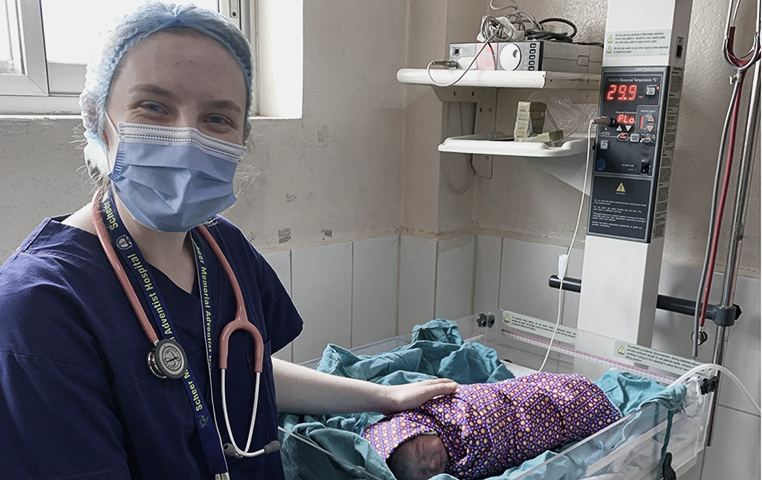
Overall, my placement was a rich learning experience of which I am extremely grateful for. It opened my eyes to new perspectives, taught me a lot about the kind of future I aspire to have both medically and personally, and challenged me to remain open-minded and optimistic in the face of often extreme difference. I will cherish the genuine relationships and insightful conversations I had, and the feeling of being welcomed so warmly into the family of staff and patients at Scheer Memorial Adventist Hospital. Thanks to the BOQ Specialist FutureFocus grant, I was able to savour my time in Nepal and give back to the hospital who helped facilitate such a memorable experience.
 Facebook
Facebook
Like and follow us on Facebook to keep up to date with all our student offers, events, competitions and more.